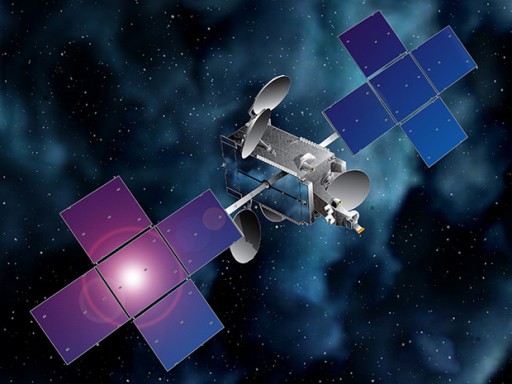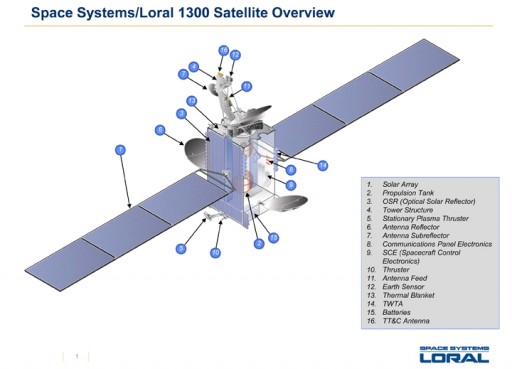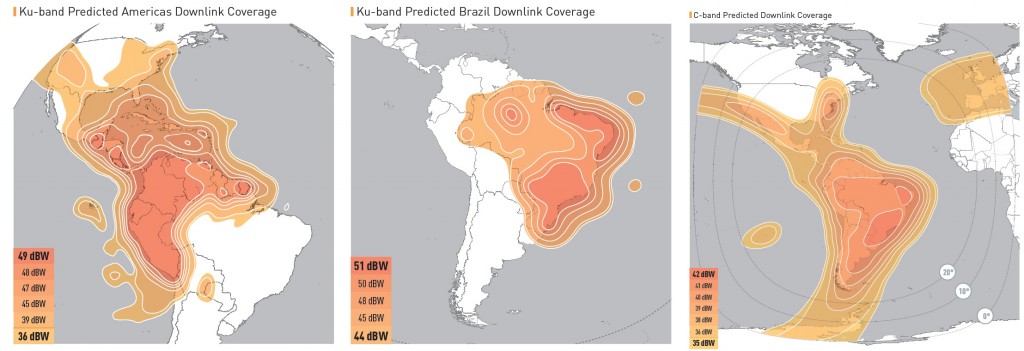Eutelsat 65 West A

Eutelsat 65 West A is a multi-band communications satellite operated by Eutelsat S.A. to deliver a variety of communications services to Latin, Central and South America including Direct-to-Home television, video distribution and broadband access.
The high-capacity satellite features a communications payload covering three frequency bands designed to serve expanding video and broadcast markets across Brazil and Latin America. Eutelsat 65 West A combines the advantages of broad land-mass coverage in C- and Ku-Band for wide video and Direct-to-Home television distribution and the high-throughput in Ka-Band to deliver flexible broadband access. Stationed at 65°W, the satellite has excellent elevation angles for a growing pay-TV neighborhood in Brazil.
The satellite is outfitted with 10 C-Band transponders operating at 54MHz (15 36MHz equivalent) providing a broad coverage zone over South and Latin America, extending to the entire east and west coast of the United States, plus a coverage area in western and central Europe. The peak of C-Band performance is over the western parts of Brazil to deliver maximum performance to paying TV customers.
Eutelsat 65 West A hosts 24 Ku-Band transponders at 36MHz, generating a pair of coverage zones, one exclusively for Brazil with peaks over populated areas and along the coast line, and the second coverage zone is optimized for the Andes, Central America and the Caribbean. The Ku-Band payload is used for DTH and video distribution. The Ka-Band payload of the satellite can generate up to 24 spotbeams for flexible use delivering broadband connectivity to the most populated urban and suburban parts of Brazil and densely populated areas across Latin America.


Eutelsat selected Space Systems/Loral (SSL) in July 2013 for the construction of the satellite based on the popular LS-1300 satellite platform. The satellite has a liftoff mass of 6,600 Kilograms and measures 8.5 by 3.0 by 3.5 meters in size when in its stowed configuration.
LS-1300 is a flexible satellite platform that can be flown in different configurations to accommodate different communication payloads with a total power of 5 to 18kW. Using different configurations, LS-1300 satellites can weigh from 2,200 up to 6,700 Kilograms featuring payloads of 12 to 150 transponders. Through optimizations, the number of transponders that can be accommodated can be increased even further. LS-1300 was introduced in the late 1980s, but undergoes constant modifications going through a number of revisions over the years.
Eutelsat 65 West A uses the high-power variant of LS-1300, featuring two five-panel solar arrays that deliver 16.4kW of power to a dedicated system that conditions the satellite’s power bus and controls the state of charge of the vehicle’s batteries. Three-axis stabilization and navigation is accomplished by state of the art navigation sensors and reaction wheels.
The satellite is equipped with a chemical propulsion system for orbit-raising and stationkeeping using a main apogee engine and a series of attitude control thrusters. LS-1300 also provides the option of an additional electric propulsion system, whether this option is exercised for Sky Muster is not known.
The spacecraft is expected to operate for at least 15 years.
Eutelsat 65 West A is making a rare single-payload launch atop an Ariane 5 ECA rocket, normally used to deliver a pair of satellites to Geostationary Transfer orbit, one in the 6,000kg range and a smaller payload in the 3,000kg weight class. Because of a lack of smaller passengers, Eutelsat 65 West A was faced with a lengthy wait for a co-passenger to be ready and Eutelsat decided to foot the bill for an entire Ariane 5 rocket, foregoing the wait period similar to Intelsat’s decision to launch a lone satellite atop Ariane 5. 2016 will see at least two single-payload missions of the European workhorse rocket.

